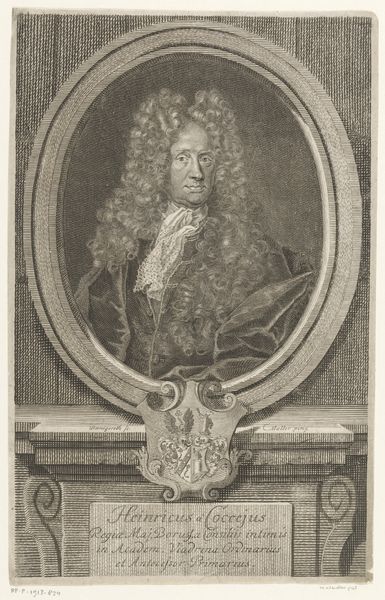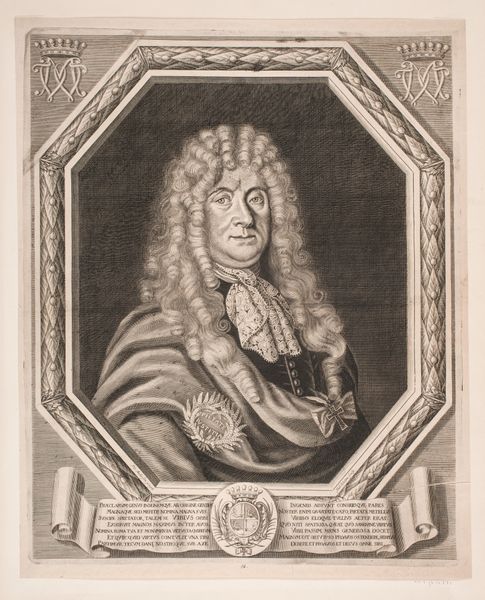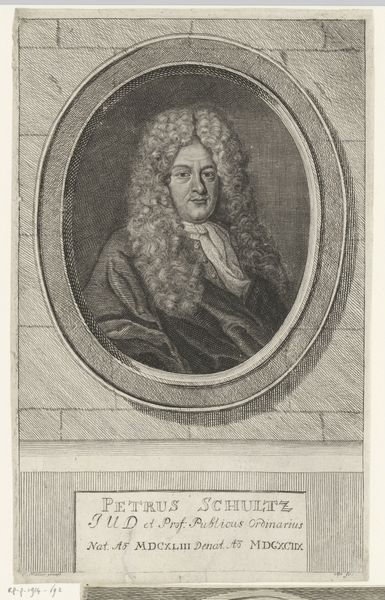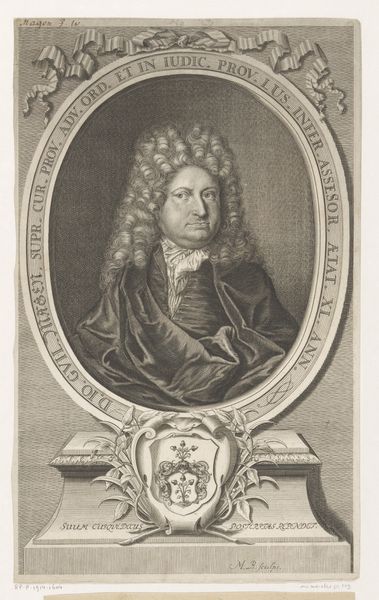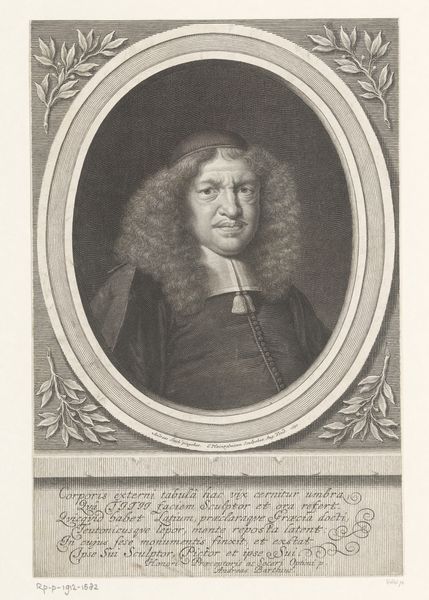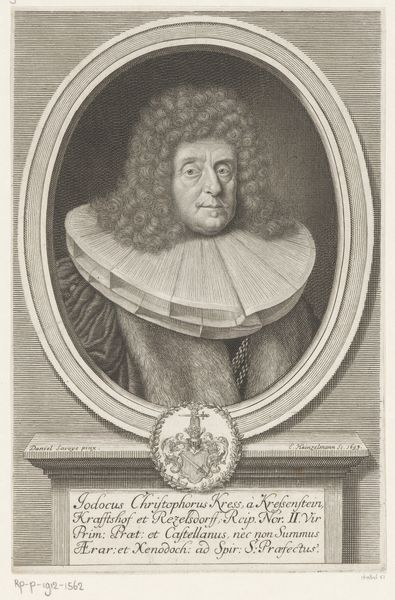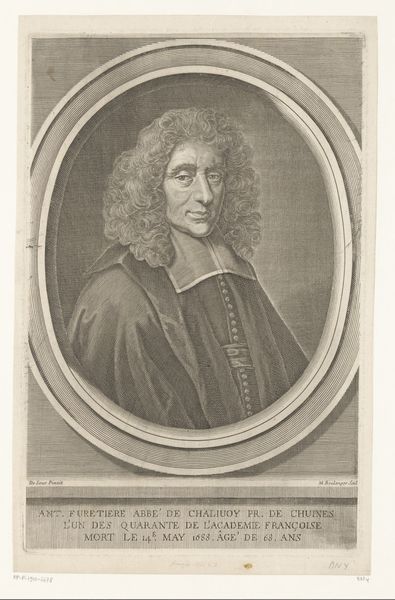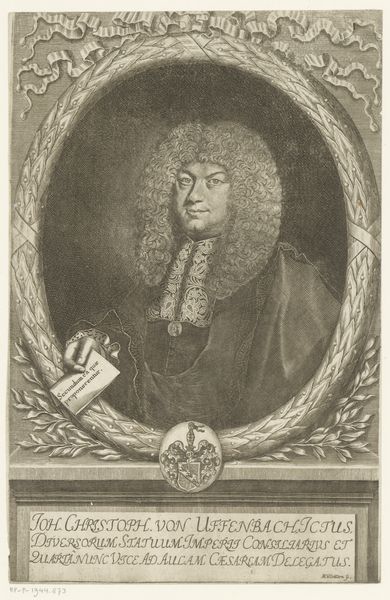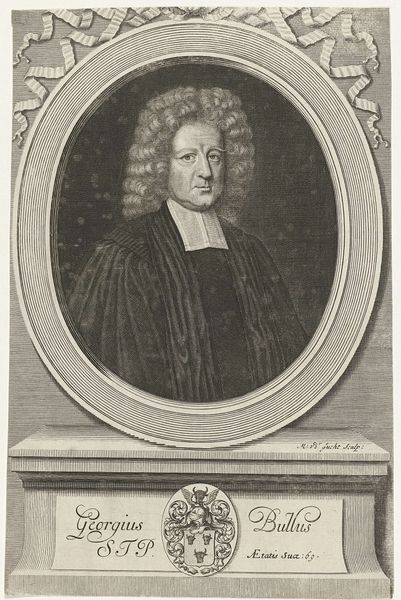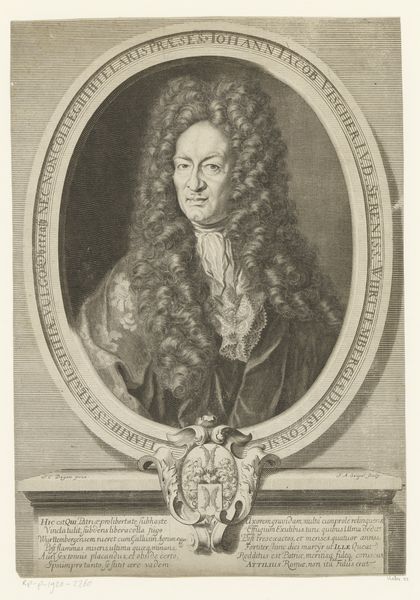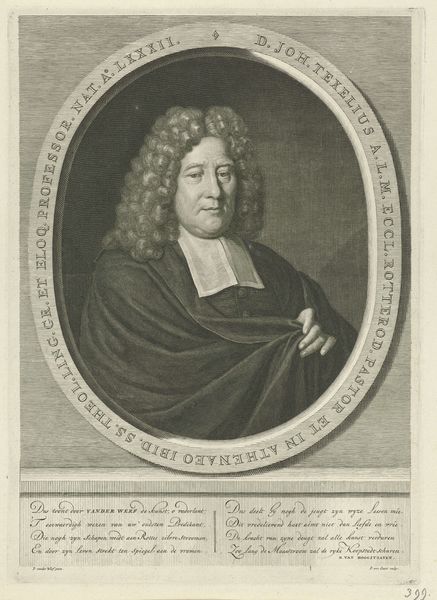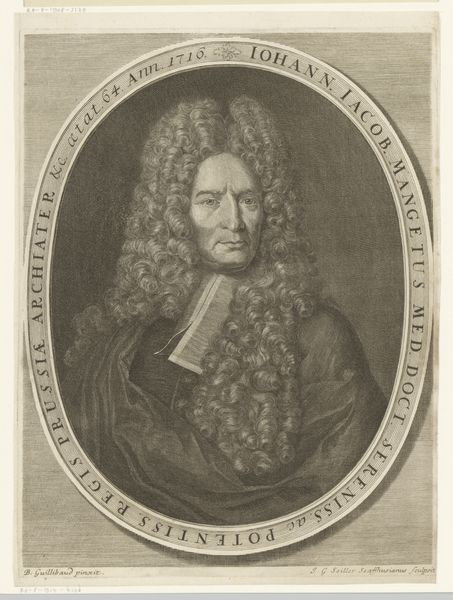
engraving
#
portrait
#
baroque
#
caricature
#
portrait reference
#
unrealistic statue
#
framed image
#
portrait drawing
#
engraving
Dimensions: height 313 mm, width 209 mm
Copyright: Rijks Museum: Open Domain
Editor: This is "Portret van Felix Spitz," an engraving located at the Rijksmuseum. It dates between 1664 and 1725 and is attributed to Christoph Weigel. The overwhelming sense I get is one of power—that wig is intense! What do you see in it? Curator: Indeed. That wig is everything! But it's not just a fashion statement. Consider the subject: Felix Spitz, a professor of feudal law. This engraving, therefore, is making a very specific argument. Weigel presents Spitz within the context of learnedness. Look at the deliberate framing of the portrait – what statement does that make to you? Editor: The oval frame and inscription below elevate Spitz, making him seem important. So, it's not just a portrait, but a statement about his societal position? Curator: Precisely! During the Baroque era, portraiture was frequently used as a tool for constructing and reinforcing social hierarchies. This engraving, therefore, doesn't merely depict an individual but embodies ideas about knowledge, status, and who had access to it. How might Spitz's profession and the artwork's date inform its cultural function? Editor: The Baroque style and his profession would likely appeal to the aristocracy, reinforcing their sense of superiority by seeing someone they consider their equal honored in such a way. Curator: Yes, absolutely. It acts as visual propaganda, reinforcing a social order that benefited a select few. The visual language—the wig, the frame, the inscription—all contribute to constructing this image of power. Food for thought. Editor: I see now; the portrait isn't just about Spitz; it reflects the power structures of his time. It's been incredibly insightful. Curator: And the awareness of historical context makes all the difference!
Comments
No comments
Be the first to comment and join the conversation on the ultimate creative platform.

